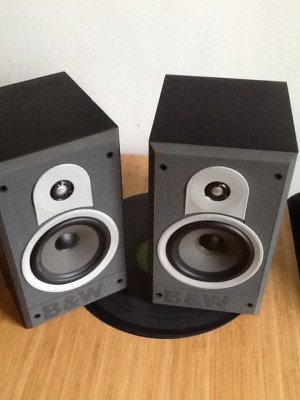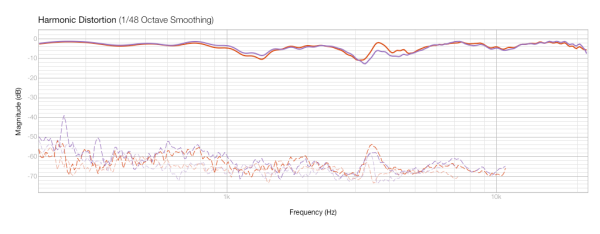In the nearfield monitor reviews I write for Sound On Sound I sometimes find myself explaining that the monitors in question are frighteningly expensive and for the majority of readers will probably remain, “an aspiration rather than a realistic option”, or some other comfortable phrase intended to soften the sad news that most of us will never have the chance to own a pair. In the last six months or so for example I’ve reviewed monitors from Kii Audio, Geithain, Manger and Amphion, each of which demand many thousand of pounds, and each in their way triggered a pang of regret when they were reclaimed by their respective manufacturers or distributors. The Kii Three, for instance, is easily one of the best speakers I’ve ever heard and in particular had me wondering if I could get away with an innocent exclamation of, “Sorry? What speakers?” When the man came to collect.
So, partly as a kind of antidote to all the listening to expensive monitors, and partly in response to a friend who’s just going through the process putting together a studio on a restricted budget, I’ve been wondering just how little can be spent on a genuinely capable pair of nearfield monitors. Of course the market for new active nearfield monitors, extends right down to a couple of hundred pounds or even less these days, but not only do I have grave suspicions when a price appears too good to be true (decent speakers fundamentally need to be constructed from properly engineered materials and components, and these are not cheap), the notional budget I came up with was even smaller: £100. With £100 to spend, and a viable pair of monitors the aim, the most likely route to salvation it seems to me is a pair of classic passive hi-fi speakers from eBay or Gumtree twinned with a similarly inexpensive amplifier – either another previously loved eBay purchase, or that old Rotel, or NAD, or Yamaha, (for instance) that’s been hiding in a cupboard for years.

I’ll perhaps look at buying an eBay amplifier another time but to satisfy my cheap monitor curiosity I have for the last few weeks been keeping an eye on eBay to see what can be had for a £100. As you might imagine, the choice is huge and the pitfalls varied, but I finally took a punt on a pair of Bowers & Wilkins DM550s for £75 (+£13 for delivery). The DM550 dates from the early 1990s and comprises a relatively advanced (for the time) 25mm aluminium dome tweeter combined with a 140mm paper cone bass/mid driver. The bass/mid driver is entirely conventional in style but is neatly constructed to a good standard within a custom designed die-cast chassis. The industrial design of the whole DM500 range was by Kenneth Grange, who worked regularly for Bowers & Wilkins over many decades, and to this day I wonder why he didn’t have the big B&W logo on the front panel aligned centrally. The DM550 cabinet is a closed box constructed from 15mm board but with a notably rigid thermoplastic front panel. The small crossover attached to the inside of the rear panel comprises a first-order low pass filter for the bass/mid driver and a second order high pass, with some resistive attenuation, for the tweeter. Estimating the component values from their size suggests the crossover frequency is, conventionally placed, around 3kHz – although with the very gentle bass/mid driver roll-off from its 6dB/octave filter, there will be significant driver overlap. The capacitor in the crossover network, in series with the tweeter, is a reversible electrolytic of a type known to degrade over time. So if the speakers do turn out to be basically sound, it would probably be worth replacing the capacitors. Relatively unusually, the crossover incorporates a tweeter protection fuse. While such things are I think relatively benign in themselves (although not entirely), corrosion and the general grime of 25 years on the fuse clip and fuse body will quite possibly be a source of distortion. So, as with my instinct that the electrolytic capacitors should be replaced, I think the fuses ought to go too.

Of course the first thing to establish on a pair of speakers perhaps nearing their twenty-fifth birthday is whether they still, even approximately, work as intended. So I fired up FuzzMeasure to examine the basic performance of each and what I found is illustrated in Diagram 1. This is the basic amplitude response from 200Hz upwards of both speakers overlaid. Also shown in the diagram is each speaker’s second and third harmonic distortion. The amplitude response curves reveal speakers that have a reasonably flat character with just a few small deviations and my gut feeling is that they are probably not much different now than they were 25 years ago. That gut feeling is partly reinforced by the pair match between the speakers being pretty good. There is a minor Dumbo in the room though: the one significant divergence between the two speakers is around 4kHz where their responses differ by as much as 4dB. Interestingly, the harmonic distortion curves (basically as expected for both speakers) also diverge at the same frequency. Taken together, the divergence at 4kHz in both amplitude response and distortion suggests that something is slightly, although not terminally, awry. Maybe one tweeter is slightly below par, or maybe one of those electrolytic capacitors is misbehaving. Some further investigation is required……

Hi.
Funky Junk advocate the Mordaunt-Short MS10 for the same purpose:
http://www.proaudioeurope.com/info/sound-bites/sound-bites-monitors-2.
At around £30-50 on ebay could they halve the budget.
I imagine you’ve come across them at some point…. would you say they’re suitable?
Warm regards – S
LikeLike
just thinking out loud- i have a pair of Sony SS-CS5 s (inadequate hand me ups from my son) that started me looking,at another house i have a bookshelf Bose set that i can bring to listen to (cant remember the model but they are small) , but i just ran across these B & W on craigslist.
do you have a similarly priced used bookshelf speaker you have reviewed or are aware of that i should be looking into? i mostly listen to classic rock,but i play guitar so i appreciate good acoustic reproduction. I am using a Pioneer VSX-454 as an amp, no surround sound needed, mostly CDs or believe or not Pandora-but likely to upgrade to a HiFI equivalent eventually.
there are KEF Chorale 111s for sale for $60 and B and O BEOVOX S75s on eBay for $85. If going to $100 or a little more gets me phenomenally better sound, i could do that..If i do buy the B & W should i just automatically change the capacitors out? do you get them on line, it seemed the ones on your website were a little bigger
thanks for your help- i will be subscribing to your blog/website etc- i like your approach-Thanks!
LikeLike
I believe DM550s sold for somewhere around $400 Len. I know nothing about the Sony SS-CS5s I’m afraid so can’t comment. The Bose also – although my opinion of Bose generally has always been that the entire company is predicated on the triumph of simplistic marketing over engineering and electro-acoustics. The KEF Chorale III was a reasonable entry-level ‘bookshelf’ speaker in its day so, if the pair you have in mind have been well looked after they should be ok. The Beovox S75s are pretty complex beasts (four-way) so there’s quite a lot to go wrong on them. I’d avoid unless you enjoy tinkering and/or tracking down obscure drivers.
As far as the capacitors on the DM550s (or any speaker of that kind of age) is concerned, if you can wield a soldering iron and a screwdriver reasonably effectively then change them yes. The ones I used were bigger metalised polypropylene types so a bit of a challenge to fit, but you could replace like with like – reversible electrolytic. Assuming you’re in the US you can get pretty much any speaker component you need here: https://www.madisoundspeakerstore.com
LikeLike